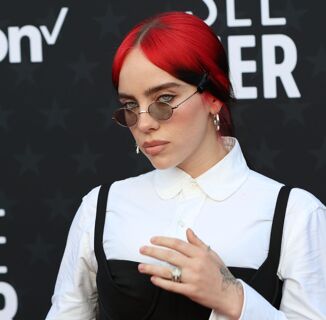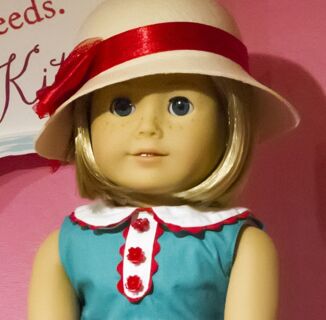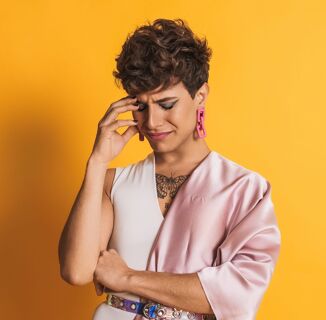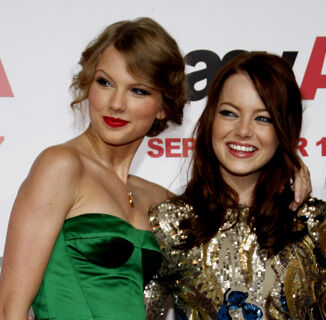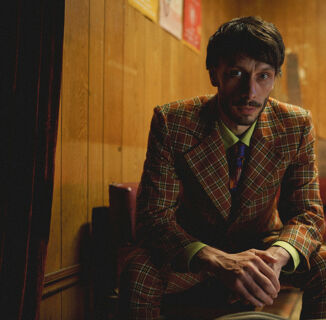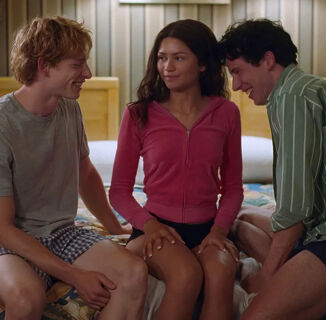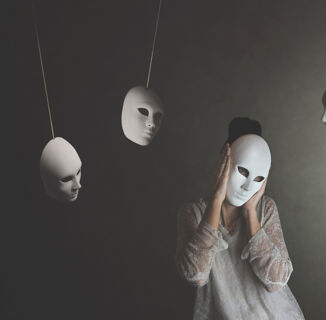In Alabama, a tourist can visit many Civil Rights-era landmarks. Birmingham’s Sixteenth Street Baptist Church, where a Klan bomb killed four little girls preparing for Sunday School, still hosts a regular 11am Sunday service. Ninety miles south, tourists can still walk the Edmund Pettus Bridge in Selma, a site that kicked off Civil Rights marches and a brutal confrontation with police dubbed “Bloody Sunday.”
But Civil Rights tourists who travel further down to Alabama’s southwest pocket would find themselves a bit out of luck in Mobile. Two grassroots leagues exerted pressure on local politics during the Civil Rights era and insured that Mobile’s struggles played out in the courtroom and not the streets. Until now. Last August, Mobile’s Government Plaza played host to a packed out county commission meeting where concerned locals spoke out against Mobile’s first Drag Queen Story Hour.
“This event represents opening the door to many other abhorrent behavioral lifestyles,” Woodridge Baptist Church Pastor Matt Morris said, “which threatens to undermine the moral fiber of this country.”
When writer and new mom Michelle Tea launched Drag Queen Story Hour at the San Francisco Library in December of 2015, she was more focused on her raucous toddler than the country’s moral fiber. By the summer of 2016, the Brooklyn Public Library was on board and the event took root up and down blue states on the east and west coasts with very little fanfare or community agitation.
When there was a protestor, such as the one at a reading pegged to Staten Island Gay Pride, it was usually a lone wolf who snuck into the event. Now that the franchise is replicating in the Deep South, religious conservatives posit it as the latest skirmish in the ongoing culture wars. It’s here that drag queen Khloe Kash read from children’s books to an audience of avid 3 to 8-year-olds at Mobile’s first Drag Queen Story Hour, giving rise to angry shouts about protecting our children. These were not lone wolf protestors, though, and they’ve grown large enough to be contained by metal police gates outside the event. Their ire spreads seismically.
Six hours west of Mobile, in Lafayette, Louisiana, the president of the local public library board, Joseph Gordon-Wiltz, resigned over plans to implement a Drag Queen Story Hour in his library. Congressman Clay Higgins jumped into the fray, releasing a statement ending with the battle cry, “the very purpose of this incredibly inappropriate event should be questioned. The intrusion of the LGBQT Drag Queen realm into the Lafayette community, targeting our youngest children within a publicly funded venue, can only reflect the leftist agenda to deconstruct gender across America.”
A bit further west, Houston’s mayor Sylvester Turner and library director Rhea Lawson were named in a lawsuit brought by religious conservatives who don’t want Drag Queen Story Hour in their library system, let alone their tax dollars funding this assault on their religious freedom. The motley crew of plaintiffs included a man who uses library books to homeschool his children, a mother whose husband left her for a transgender woman and a man whose previous suit was predicated on his right to marry his computer.
“Drag Queen Story Hour is just what it sounds like,” reads Michelle Tea’s original mission statement. “Drag queens reading stories to children in libraries, schools, and bookstores. Drag Queen Story Hour captures the imagination and play of the gender fluidity of childhood and gives kids glamorous, positive, and unabashedly queer role models. In spaces like this, kids are able to see people who defy rigid gender restrictions and imagine a world where people can present as they wish, where dress up is real.”
Jonathan Hamilt came on board in San Francisco by their second or third event and in the fall of 2015, he was huddling with a like-minded Rachel Aimee at Feminist Press, working together to bring Drag Queen Story Hour to New York.
“We brought it to a bookstore first,” he says, “and people kept asking more about it.” Soon the Brooklyn Public Library was recruiting them.
“It kept going and going,” he says. “Now it’s international.”

By November of this year, it got real. Mobile’s West Regional Library main entrance was cordoned off, dividing more than 100 protesters and counter-protesters by about 50 feet, enough room to prevent fisticuffs, but also ensure that each group would be trying to out-scream the other. One side chanted “God loves gays,” while the other riffed on kids having their childhood perverted.
It’s the return of Drag Queen Story Hour to Mobile, and one religious protester inside his pen wrestled with a bright red cross, twice as tall as he is, replete with foot and hand pegs along with a crown of thorns. The prop is indicative of this protest’s raison d’être: go big or go home. Inside, children twerked on silver platforms raised about six inches off the floor. They were warming up for Zamareyah Dawn, who would read to them from two works: Sara O’Leary’s book A Family Is a Family Is a Family and Maya Angelou’s poem Life Doesn’t Frighten Me.
A Family features a foster child who gets up her nerve to share that fact with her class after a round-robin reveals kids raised by grandparents and through joint-custody. The child raised by a gay couple is certainly not central to the story. It’s hard to see how any parent could object to anyone reading Maya Angelou to their kids, and her poem here was more about nocturnal wild animals than any type of overt homosexuality. By the time the children moved onto crafting, the protesters holding up their sad, home laser-printed bible verses and the ten police officers maintaining order could be a million miles away. They had all fallen into that familiar, glazed-over cadence of children gluing shit onto construction paper.
“We recently had a Story Hour at the Brooklyn Central branch at the Grand Army Plaza,” Hamilt explains, “and there was a protester straight out of central casting: cowboy hat and overalls with the word ‘repent’ stitched across the back. It was too funny. So he came in and did this whole rigamarole. No one turned around or looked at him during the disruption. Luckily, the drag queen was already on her guitar and playing so people just started clapping and singing louder until security escorted him out.”

For Hamilt, and those whose safety he is responsible for, it all comes down to training.
“We did a bunch of storytelling trainings on how to read books to kids and how to facilitate a reading time,” he says of an early meeting in Brooklyn. “And then it was me and Lil Miss Hot Mess, we were one of the first to do the library in Park Slope and it turned out to be huge.”
Those trainings include “[making] sure that people focus on the positive and don’t react to the negative, even on social media and online.” On Mobile’s Drag Queen Story event page on Facebook, one troll asked a mother why she just doesn’t take her kids to Bourbon Street. The mother went in, telling the troll he’s being more dramatic than any drag queen.
“You’re going to get hate,” Hamilt says. “There are going to be some people who say some really hateful things. You’re going to get trolls. But don’t react. Don’t engage, just be the higher person.”
But if a mama bear can’t resist a good smackdown, what chance does a drag queen, who has cut her teeth on hecklers in the club, have? “Well, yeah,” he agrees, “but we’re constantly being scrutinized and filmed. And we’re working with kids. If we were in a nightclub or at Pride, it would be a different story. We’d have the community to back us up. But with kids, if you ignore it, they will ignore it. So we have a zero engagement tolerance. We’re like, don’t even address us. But don’t find us in the club, either. It’ll be a different story.”
The roster of participating queens is extensive and impressive, both in their personas and their reading choices.
“Harmonica Sunbeam is always in a crazy outfit that’s very colorful. And Lil Miss Hot Mess is like Ms. Frizzle,” he says. Miss Hot Mess has also been known to freestyle her own version of the children’s classic “The Wheels on the Bus” that includes lyrics like “The hips on the drag queen go swish, swish, swish…”
Freestyling, it should be noted, is encouraged by Drag Queen Story Hour, which has a very free-form design. It’s why Michelle Tea’s original mission statement counters gender restrictions with role models, but Mobile’s chapter head Bryan Fuenmayor describes his event as a way to show the world that the city of Mobile itself is tolerant and diverse. This make-it-up-as-you-go quality is also one that weighs on Hamilt.

“Every time I do it,” he says, “I’m always thinking, OK, which works better with kids? When I do drag, I need to not wear a short dress because the kids are sitting at my knee level. So you learn stuff every time you do it.”
Hamilt says the queens are always on the lookout for new material.
“As classic as Heather Has Two Mommies is,” he explains, “it’s a really bad book to read to a four-year-old because it’s so intense. All of that goes over their head, but we worked really close with the NYPL and the Brooklyn Public Library to create two different book lists, one for early childhood and one for a little bit older.”
“Then we comb through and pull the ones that are good just for story hour purposes alone,” he continues. “The Very Hungry Caterpillar is a great book. Brown Bear, Brown Bear, What Do You See? and Pete The Cat are all just great books and then we have our books that talk about gender and about being different and acceptance and tolerance. We read Neither by Airlie Anderson, which is one of our favorites. And then there’s Worm Loves Worm. And Sparkle Boy, 10,000 Dresses and I Am Jazz for older kids. So we all have our favorites, our classics.”
The felines on Hamilt’s reading list outnumber humans, but it’s Heather Has Two Mommies alum Lesléa Newman’s 2017 book Sparkle Boy, with its three-year-old protagonist harboring an affection for his older sister’s sparkly shirts, that tees up this year’s Drag Queen Story Hour lightning rod.
Parents, it seems, are learning too. “At one of the first story hours I did in New York,” Hamilt remembers, “I was pretty new as a drag queen, too, and this woman came straight up to me. She didn’t say hi or introduce herself. She just goes, ‘How long were you on hormones?’ So I was like, ‘Whoa! Hello, hi.’ But actually, we don’t get a lot of questions from parents.”
At the Staten Island event, a mother of two, who asked not to be named, admitted she likes the event, and has attended before in Park Slope, where she lives.
“That’s actually a tough room,” she confides, drawing a parallel between the Stepford-like rigidity around being “cool” with gender fluidity that she observes in Park Slope and the implacability of the religious right. Her youngest child wears his hair past his shoulders and is definitely rocking what Michelle Tea refers to in Drag Queen Story Hour’s mission statement as “the gender fluidity of childhood.” His mom says she will sometimes gently course correct when they are at home, but wouldn’t feel comfortable doing so around the other Park Slope moms.
“They’re on it,” she says. “Like I said, it can be a tough room.”

For Hamilt, the Park Slope parenting prerogative is much different from “the buckle of the Bible Belt” in rural Georgia where he grew up.
“A lot of that idea comes from an access of privilege,” he adds. “They’re in a safe enough space that there’s no backlash, but some people struggle with it and are facing adversity every day. We’ll see what happens. We all grow up.”
It’s the protesting parents in places like Mobile that Hamilt finds to be scared of what drag queens reading gender-expansive books to children means.
“It’s all fear, but the sad thing is the fear comes out in anger,” Hamilt says. “ Anytime there’s an intellectual radical shift in culture, especially one that challenges gender and puts femininity on the same level as males, people get really nervous and scared. It all goes back to patriarchy and misogyny and having men feel like they aren’t in power. When you challenge that, it trickles down into Drag Queen Story Hour.”
The point, Hamilt says, is simply to share stories that make people “feel comfortable at any age.”
“The younger you feel comfortable and accept yourself and others visually, then that’s just an extra step,” he says. “I would love to live in a world where people can present as who they are 24/7 and not get harassed. I just want everyone to be accepted for who they are.”
For more on upcoming Drag Queen Story Hour events, visit its website or Facebook page.
Images via Drag Queen Story Hour
Help make sure LGBTQ+ stories are being told...
We can't rely on mainstream media to tell our stories. That's why we don't lock our articles behind a paywall. Will you support our mission with a contribution today?
Cancel anytime · Proudly LGBTQ+ owned and operated
Read More in Culture
The Latest on INTO
Subscribe to get a twice-weekly dose of queer news, updates, and insights from the INTO team.
in Your Inbox


